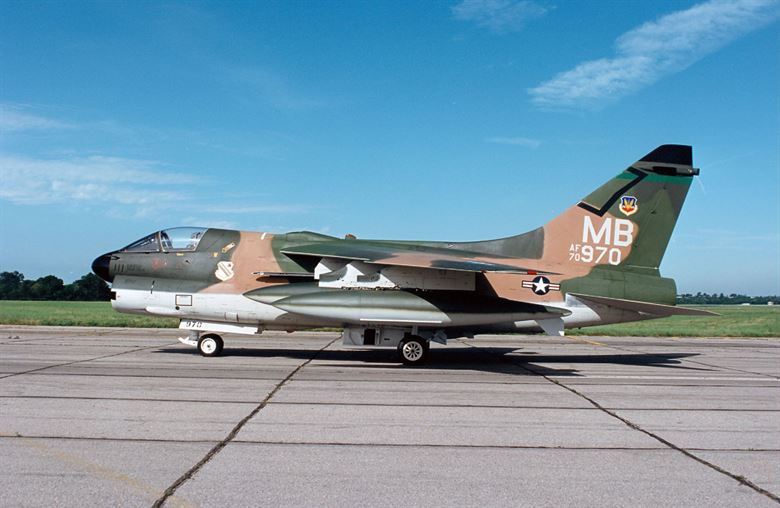The A-7D would have been more capable than the Jaguar for the Dual Capable strike / attack role in RAFG. Bigger conventional weapon load with more options off-the-shelf (Shrike, Walleye, HARM, Maverick), M61A1 20mm rotary cannon, TFR and could have carried up to 4 x B-61 nuclear weapons under dual key arrangements - continuing the USAF security arrangements that were already in place for the Phantom FGR2 with the B43/B57.
The Jaguar order could have been left at the original number for advanced flying training and then TWU.

From this source:
http://www.aircraftinformation.info/art_A7.htm
"As the Air Force began issuing requirements for their version of the Corsair II, it became obvious that a new designation was needed to reflect the 20-plus changes made to the airframe. The designation A-7D was thus assigned. Most significant among the new changes was the fitting of a new, more powerful engine. More thrust was wanted for the A-7D, but the TF-30 couldn't deliver. As an afterburning variant of the TF-30 would take too long to develop, the Air Force selected the British Rolls-Royce RB162-256 Spey turbofan instead. It was licence-built in the US by Allison as the TF41-A-1 and developed 6 460 kg (14 250 lb) of thrust, which was 1 300 kg (2 900 lb) more than the TF30. A-7Ds also had a revised avionics suite and their two Mk 12 cannons deleted. These were replaced by a M61A-1 Vulcan 20 mm six-barrel cannon firing at a selectable rate of 4 000 or 6 000 rounds per minute with a maximum rate of fire of 6 600 rounds per minute. It was mounted in the port side of the fuselage and provided with 1 000 rounds of ammunition. A KB-18A strike camera in the lower forward fuselage engine compartment was used for strike damage assessment.
Avionics were radically upgraded, the main changes going into the sophisticated new navigation and weapon delivery system that allowed all-weather operation. The AN/ASN-91 navigation/weapon delivery computer was the primary element of the system and continuously computed weapons delivery and navigation data for greatly increased weapons delivery accuracy. An AN/ASN-90 inertial measurement set provided basic three-axis navigation and an AN/APN-190 Doppler radar measured speed and drift angle. The new AN/APG-126 forward-looking radar provided nine modes of operation for air-to-ground ranging, terrain-following, terrain-avoidance, ground mapping, and other functions. An AN/AVQ-7 head-up display received and displayed computed attack, navigation and landing data from the tactical computer, and a projected map display showed navigation data."